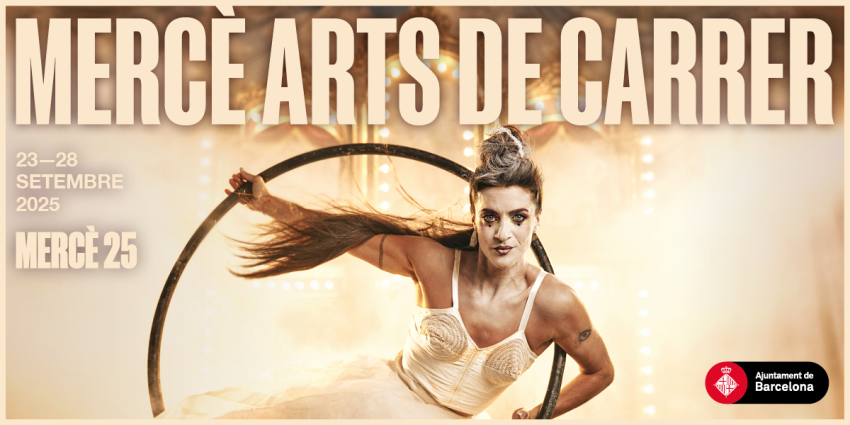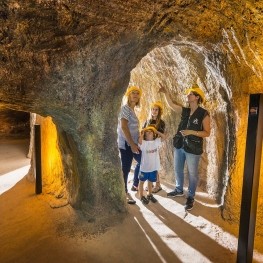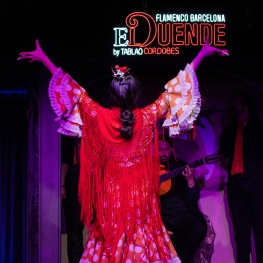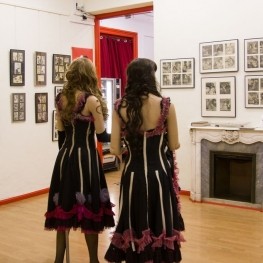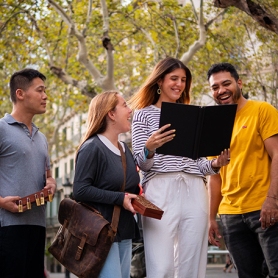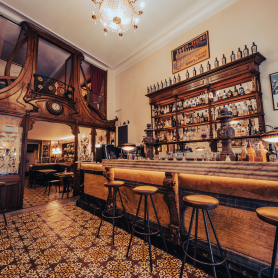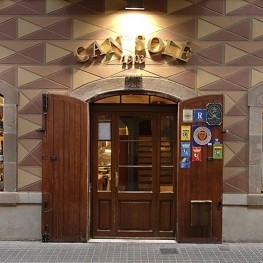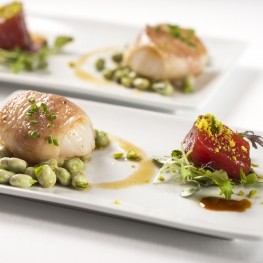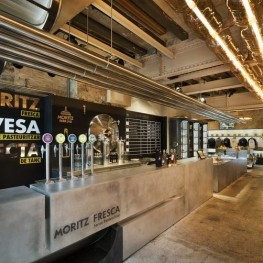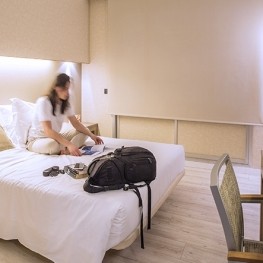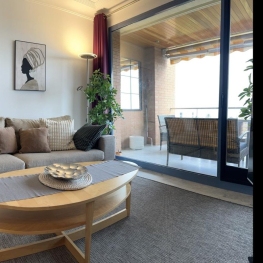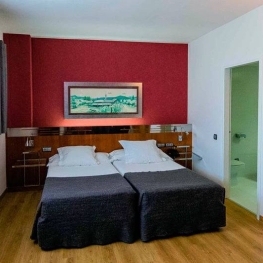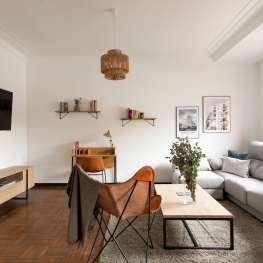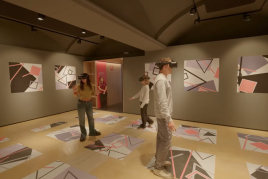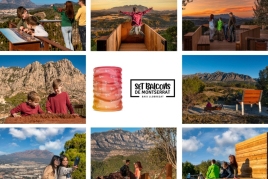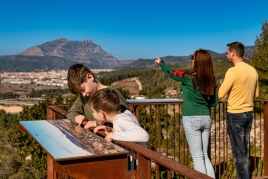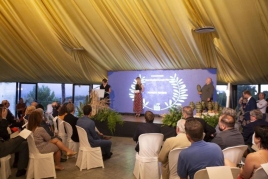Itinerary Jujol in Sant Joan Despí
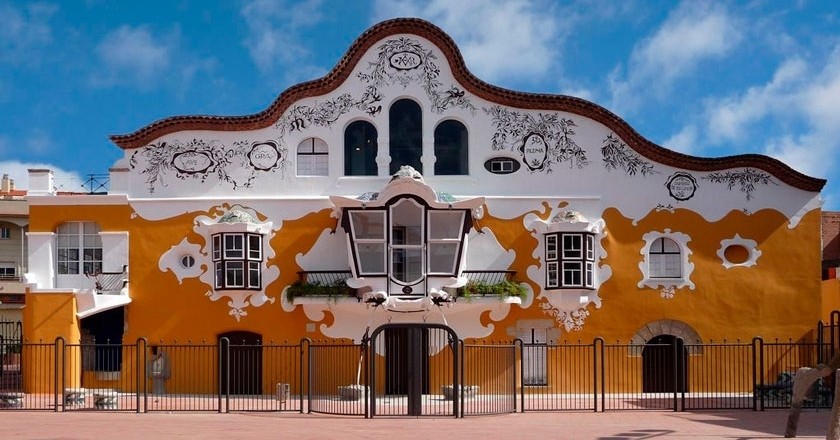
In Sant Joan Despí we find one of the most important legacies of the architecture of Josep Maria Jujol Gibert. He can be considered "such an artist" because he was able to master architecture by imposing a new style by applying it to the techniques he mastered as brittle, sculpted, sculpture, painting... His forms suggest his rich inner world.
The Jujol itinerary is a proposal to know the religious meaning of its pieces, the art of recycling, the taste for color, the volatility of the irons, the applied arts... In short, the overflowing imagination of this architect. The architectural work of Jujol is characterized by the simplicity of its means, contrasted with its originality. The quality of his works become out of all conventions. His art is born from nature, he cannot be defined as a modernist or as an expressionist.
The construction of a summer tower right next to the train station is the beginning of the relationship with the city of Sant Joan Despí. From the construction of the Tower of Creu, he had a very good relationship with the municipality, and in the last 20 years of his life the municipal architect. Through experimentation in rural architecture, we can see the architect's most suggestive works: Torre de la Creu, Can Negre, and the Serra and Xaus house among many others.
Can Negre (1915-1930)
Catalonia Square, s / n. Although it is not a new building of the architect, it has become one of the Jujolian symbols par excellence of Sant Joan Despí. Build a large facade decorated with a float in the central part and sculpted, creating a praise to the Virgin Mary. Jujol adapted this old 17th-century farmhouse in a summer house for its owner, Pedro Negro. Inside, the plastic explosion of the chapel and the staircase stand out.
Tower of the Creu (1913-1916)
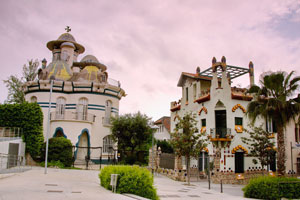 Paseo de Canalies, 14. The house, formed by five cylinders commissioned by Josefa Romeo, was the first work of Josep Maria Jujol in Sant Joan Despí. Within the agricultural tale of the time, this building became a visual impact for society. Jujol offers us a building without stylistic limitations.
Paseo de Canalies, 14. The house, formed by five cylinders commissioned by Josefa Romeo, was the first work of Josep Maria Jujol in Sant Joan Despí. Within the agricultural tale of the time, this building became a visual impact for society. Jujol offers us a building without stylistic limitations.
Jujol Tower (1932)
Calle de Jacinto Verdaguer, 31. During the years of the architect's relationship with the town, Jujol ended up building his own house to spend stays and control the works set in motion in the town. The house is composed of two houses with a letter-shaped floor "L", and decorated with wavy sgraffids of the favorite color of Jujol, the kingfisher. The inscription on the door "God be" speaks of a personality marked by religious sense.
Serra-Xaus House (1921)
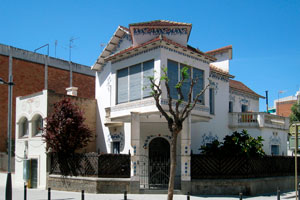 Jacint Verdaguer Street, 29. This work could be defined as the building of more modern forms within Jujol's work in Sant Joan Despí. Straight lines are those that prevail in the spaces of the building. The decoration is based on blue and red sculpted, as well as with Ane couples to the upper parts of the windows.
Jacint Verdaguer Street, 29. This work could be defined as the building of more modern forms within Jujol's work in Sant Joan Despí. Straight lines are those that prevail in the spaces of the building. The decoration is based on blue and red sculpted, as well as with Ane couples to the upper parts of the windows.
Rovira House (1926)
Calle de Jacint Verdaguer, 27. Jujol created a facade dedicated to Sant Antoni Abad, where we can find sgraffits dedicated to the field and fruit. The main characteristics of the building are the dating (anno 1926 domain) and the signature of Jujol accompanied by the anagram ARQ, referring to architect.
Parish Church of Sant Joan Despí (1944)
Church Square, s / n. The religious work of Josep Maria Jujol is based on symbolism, colorful decoration and natural forms. In the interventions he made in the church of Sant Joan Bautista we can find examples of inscriptions, such as the biblical phrases the pulpits, stained glass windows with Eucharistic representations, a tabernacle with a Franciscan background, among other examples of painting and sculpture with iron.
Door of the workshop of the locksmith José Oliver (1889-1966)
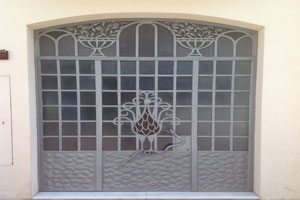 Calle de las Torres, 12. Door of the workshop of the locksmith José Oliver, who worked with Jujol. We can see the influence that Jujol exerted the artisans with whom he worked. The decoration consists of a peacock and a snake that serves as a handle on the door.
Calle de las Torres, 12. Door of the workshop of the locksmith José Oliver, who worked with Jujol. We can see the influence that Jujol exerted the artisans with whom he worked. The decoration consists of a peacock and a snake that serves as a handle on the door.
You can download the route map here.
Source: Baix Llobregat Tourism
You may also be interested in: Meet the famous Catalan characters | A walk through Catalan modernism
What to do
Tablao Flamenco Cordobés i El Duende
Barcelona (a 9.8 Km)Discover El Duende and Tablao Flamenco Cordobés and experience a journey into…
Museu Eròtic de Barcelona
Barcelona (a 9.7 Km)Discover the Barcelona Erotic Museum (MEB), where works by Picasso, Dalí, and…
Street Escape "Gaudí i el Tresor Amagat" de Casa Batlló
Barcelona (a 9.3 Km)Gaudí and the Hidden Treasure. Explore the heart of Barcelona, play and…
Where to eat
Bar Muy Buenas
Barcelona (a 9.3 Km)Few words better define Muy Buenas than "coherence." Purely modernist decor, restored…
Restaurant Windsor
Barcelona (a 8.8 Km)The Windsor restaurant, located in Barcelona, is a benchmark of contemporary Catalan…
Fàbrica Moritz Barcelona
Barcelona (a 9 Km)The Moritz Factory Barcelona is a unique space, divided into three floors,…
Where to sleep
Aparthotel Silver
Barcelona (a 8.7 Km)Aparthotel Silver is one of the recommended establishments in Barcelona. It offers…
Let's Holidays Barcelona
Barcelona (a 12 Km)We offer more than just a stay... Let's Holidays offers you a…
Aparhotel Atenea Barcelona
Barcelona (a 6.3 Km)The Aparhotel Atenea Barcelona, located in the heart of the Les Corts…
AB Apartment Barcelona
Barcelona (a 8.8 Km)AB Apartment Barcelona is an agency specializing in short and monthly apartment…

